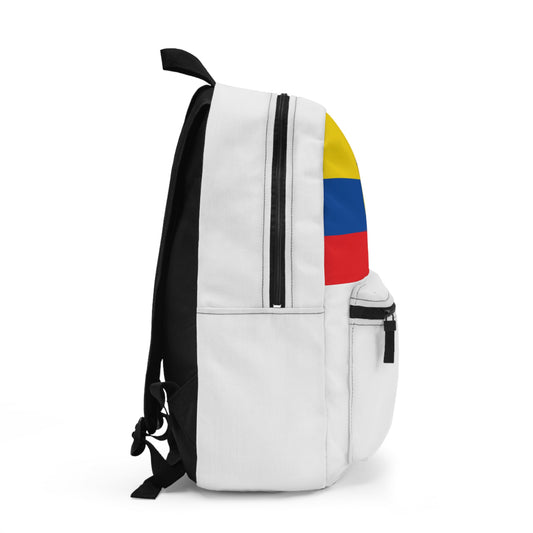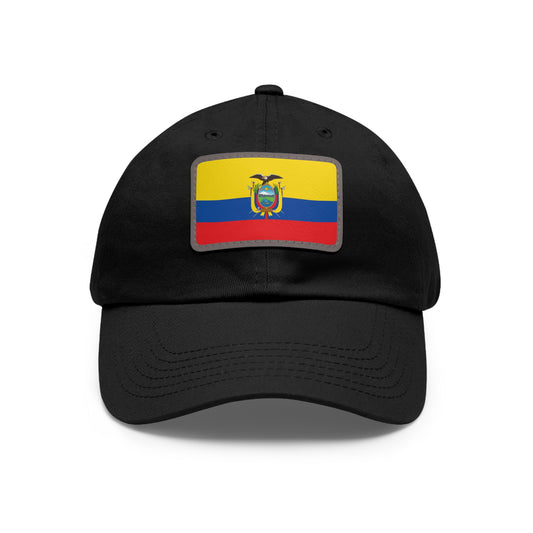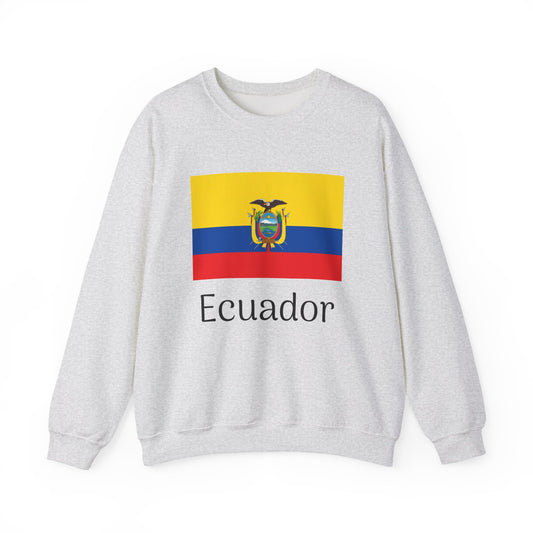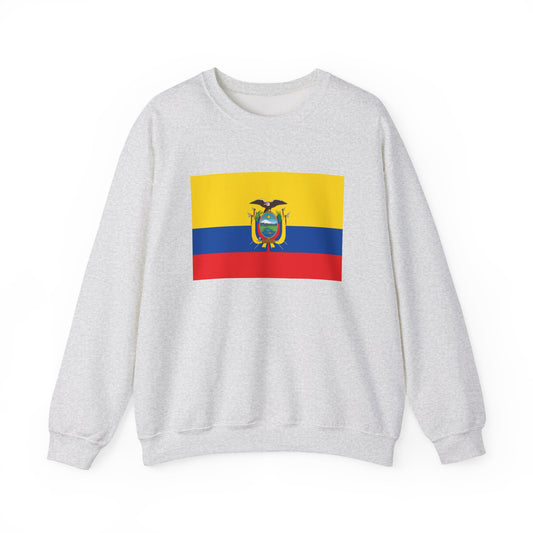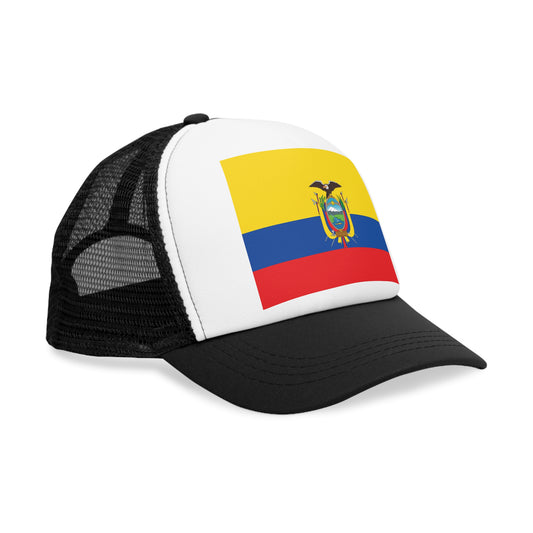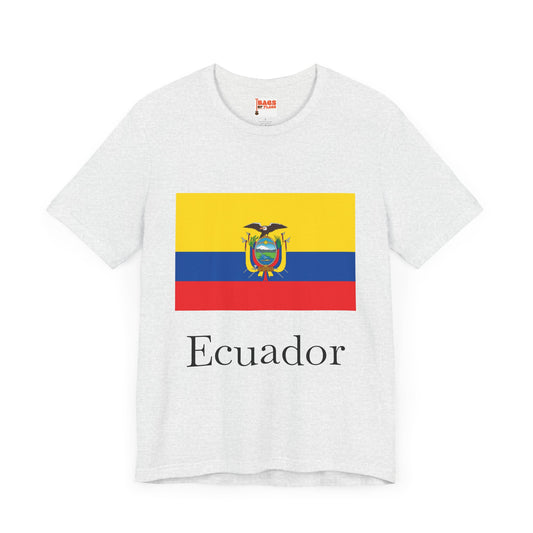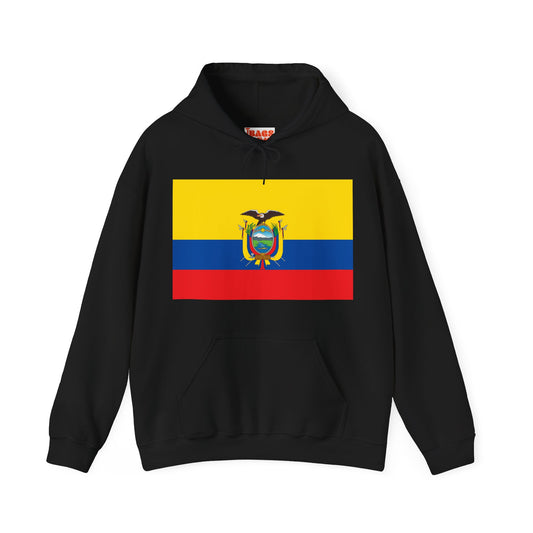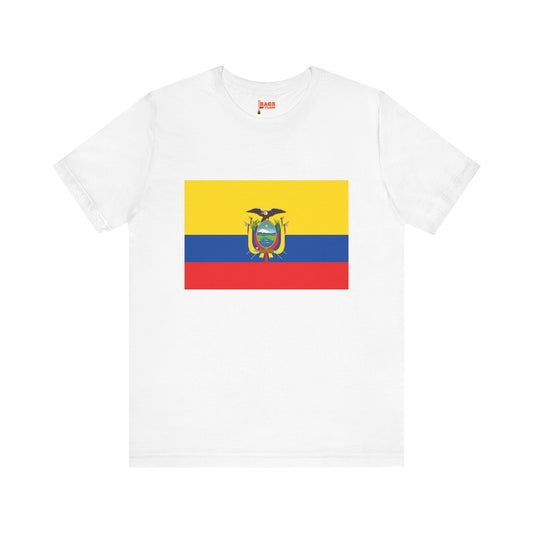-
Ecuador Pillow
Regular price $22.65 USDRegular priceUnit price / per -
Ecuador Backpack
Regular price $59.79 USDRegular priceUnit price / per -
Ecuador Leather Patch Hat
Regular price $18.85 USDRegular priceUnit price / per -
Ecuador Sweatshirt
Regular price $34.15 USDRegular priceUnit price / per -
Ecuador Flag Sweatshirt
Regular price $34.15 USDRegular priceUnit price / per -
Ecuador Mug
Regular price $11.65 USDRegular priceUnit price / per -
Ecuador Trucker Cap
Regular price $14.90 USDRegular priceUnit price / per -
Ecuador Hoodies
Regular price $34.40 USDRegular priceUnit price / per -
Ecuador T-shirts
Regular price $22.79 USDRegular priceUnit price / per -
Ecuador Flag on Hoodie
Regular price $34.40 USDRegular priceUnit price / per -
Ecuador Flag on T-shirt
Regular price $22.79 USDRegular priceUnit price / per
Collection: Ecuador
The Ecuador flag is a vibrant symbol of the country's rich history and culture. Its bold colors and striking design stand as a testament to the Ecuadorian people's resilience and pride. We will delve into the various aspects of the Ecuador flag, including its design, historical significance, symbolism, current relevance, and additional facts.
Overview of the Ecuador Flag Design and Colors

The flag of Ecuador showcases a striking tricolor arrangement composed of horizontal bands in yellow, blue, and red, listed from top to bottom. Dominating half of the flag's space, the yellow band represents the nation's diversity and natural treasures. Directly beneath, the blue band stretches across, evoking images of the clear skies and the vast Pacific that hugs Ecuador's coast. The red band anchors the flag, providing a solid foundation with its representation of courage and the sacrifices made by those who fought for the country's freedom.
Central to the flag's design is the Ecuadorian coat of arms, an emblem loaded with national symbolism, including the Andean condor, the Chimborazo mountain, and the Guayas River. This emblem distinguishes the Ecuador flag from those of other countries and injects a profound layer of national pride and identity into its fabric. Together, these elements color the flag and weave a narrative of Ecuador's past, present, and aspirations.
Historical Context of the Ecuador Flag

The adoption of the Ecuadorian flag dates back to September 26, 1860, a significant moment in the country's quest for a distinct national identity following its departure from the Gran Colombia Union, which dissolved in 1830. Inspired by the banner of Gran Colombia, the flag's design serves as a lasting tribute to the shared history and struggles for independence among the countries that emerged from the union—Ecuador, Colombia, and Venezuela.
Over the years, the flag has seen subtle changes, particularly to its central emblem, the coat of arms, reflecting national narrative and symbolism shifts. These modifications have not altered the fundamental aspects of the flag's design or the colors represented, ensuring continuity with the original vision. With only minimal alterations to its emblem, the flag's endurance underscores its importance as a symbol of unity and sovereignty for Ecuador, bridging past and present in the nation's collective consciousness.
Symbolism Embedded in the Ecuador Flag
At the heart of the Ecuador flag's design lies a tapestry of profound meaning, each color a thread interwoven with the nation's rich cultural and historical narratives. The topmost yellow band, occupying a generous half of the flag's layout, is a bright homage to Ecuador's diverse geography and abundant resources. It symbolizes optimism and wealth, from the Amazonian treasures to the Andean gold, reflecting the country's lush landscapes and the bounty they provide.
Directly below, the blue band captures the essence of the Ecuadorian spirit, representing the endless sky and the Pacific Ocean. It speaks to the freedom and aspirations of the Ecuadorian people, their connection to nature, and the vital role of water in their lives, both as a resource and a means of connecting with the world.
In a deep, vibrant red, the final band recounts the sacrifices made in pursuit of liberty. It stands for the courage and blood of those who fell in the struggle for independence, a reminder of the cost of freedom and the enduring spirit of resilience among Ecuadorians.
Central to the flag, the coat of arms is a focal point of national pride. It weaves together symbols of Ecuador's natural beauty, rich history, and aspirations. The Andean condor, Chimborazo Mountain, and the Guayas River, among others, encapsulate the country's diverse ecosystems and the historical narratives that have shaped it. Through these elements, the flag narrates a story of unity, sovereignty, and the indomitable will of the Ecuadorian people.
Current Relevance of the Ecuador Flag
Today, the flag of Ecuador continues to hold a place of great importance in the daily lives of its citizens. It is a common sight at national celebrations, symbolizing unity and joy. Additionally, the flag is crucial in military ceremonies, serving as a powerful emblem of honor and duty. In educational settings, the flag is often used to teach young Ecuadorians about their country's rich heritage and values.
However, its use is not confined to positive contexts alone; the flag has also been a focal point in political demonstrations and public protests. These events have sparked discussions about national identity, patriotism, and the role of symbols in society. Such debates highlight the flag's ongoing relevance as a canvas for expressing diverse viewpoints and concerns within Ecuador, illustrating its complex role in celebrating the nation's achievements and critiquing its shortcomings.
Additional Facts and Protocols Related to the Ecuador Flag
Ecuador upholds a set of revered protocols to ensure the proper respect and treatment of its national flag. One of the cardinal rules is that the flag must be displayed in a manner that prevents it from coming into contact with the ground, symbolizing the nation's dignity and sovereignty. Additionally, when flown alongside other flags, the Ecuador flag must occupy a position of prominence, reflecting its status as the nation's symbol of unity and pride. This means it should always be placed higher than other flags, underscoring its supreme importance.
In terms of daily rituals, the flag is traditionally raised at dawn, specifically at 6:00 am, and is lowered at dusk, around 6:00 pm, marking the rhythm of the nation's life with its colors. This practice ensures that the flag is a constant presence in the lives of Ecuadorians, from the beginning to the end of their day.
An intriguing aspect of the Ecuador flag that sets it apart on the global stage is its intricate coat of arms. Positioned at the heart of the flag, this emblem not only adds a layer of depth to the design but also makes Ecuador's flag one of the select few worldwide that incorporates such a detailed national symbol in its center. This inclusion further enriches the flag's narrative, connecting Ecuadorians to their history, natural beauty, and aspirations.




